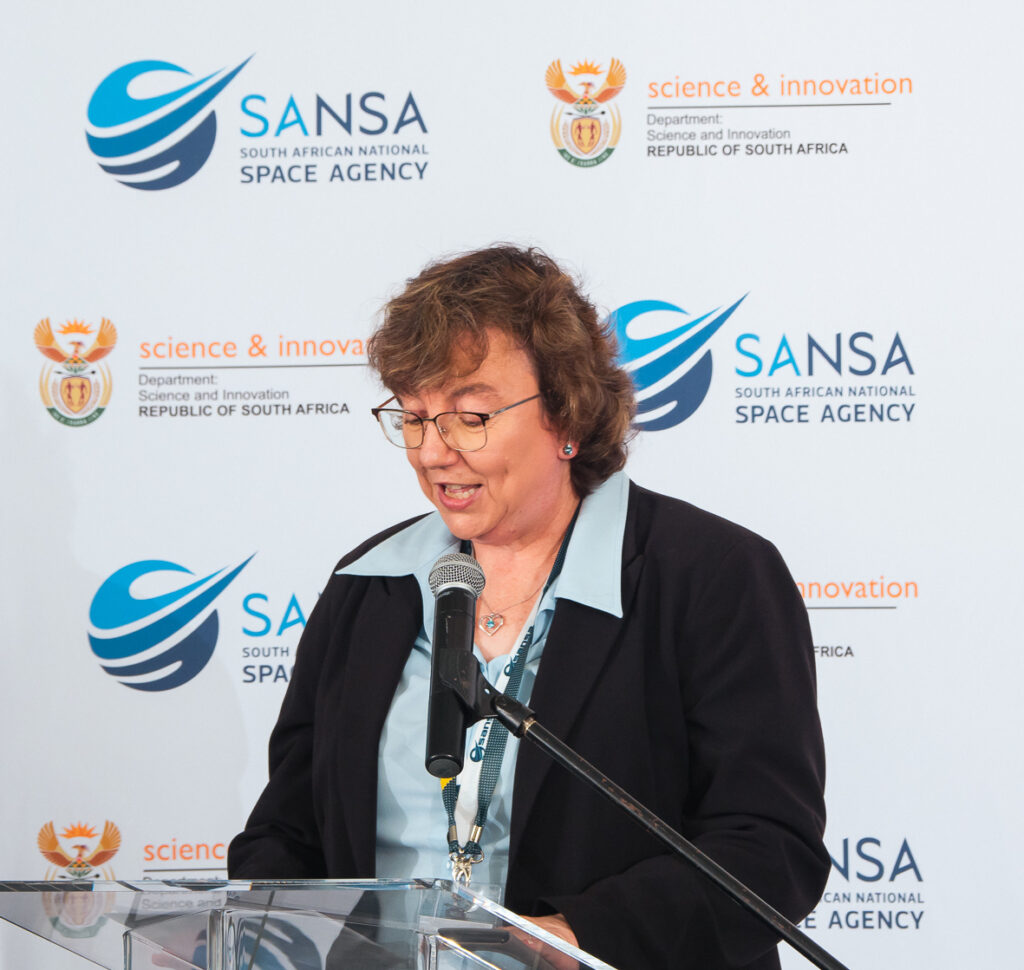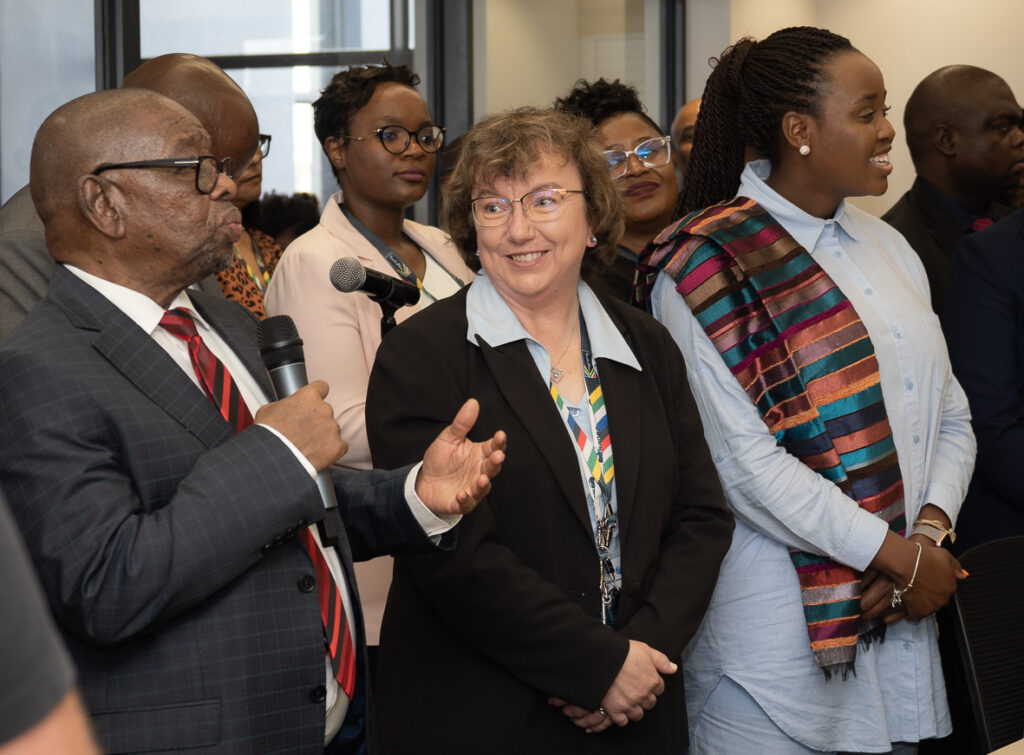In 2018, South Africa, through the South African National Space Agency (SANSA), was selected as one of two International Civil Aviation Organization (ICAO)-designated Regional Space Weather Centers – the other being a joint Centre by Russia and China. The implications of this designation meant that a full operational capability and advanced research capabilities in the space weather field that meets the ICAO requirements needed to be put in place by November 2022. SANSA launched the South Africa Space Weather Capability, which included a 24/7, fully operational space weather centre to offer space weather forecasting and alerts to Africa, earlier in November 2022.
In this interview, Dr Lee-Anne McKinnell, the Managing Director at SANSA, Hermanus, sheds some light on the impact of this game-changing launch on the African space industry, what to expect from the centre and the needs of the African space industry.
Please tell us about the SANSA Space Science Programme
The SANSA Hermanus site is mainly responsible for the agency’s space science programme and projects. One of the key responsibilities is fundamental and applied space science research. We also provide a science and applications data platform through the operation of a distributed network of geophysical instruments. Furthermore, we provide space weather applications, products and services, and magnetic technology products or services, manage the SANSA Student Development Program and undertake Science Engagement activities.

The agency recently launched the Space Weather Centre in Hermanus. What are the main objectives and long-term goals of this project?
The launch of the Space Weather Centre and Capability is a significant milestone and a stepping stone in our journey to grow space capabilities here in Africa. The Centre’s main objectives are to provide forecasts and predictions of space weather on a 24/7 basis, to demonstrate the research-to-operations value chain, and to show how the legacy of research and development can lead to applications that help us protect our technology from the harsh space environment. We also have to develop skills for the space weather programme and uplift the value proposition of space science for Africa. We need to ensure that we have a domestic capability and know how to address the global challenges of space weather, but with an emphasis on the African continent. The launch of the Space Weather Capability is significant because it marked the end of the establishment phase, which took us three years. Now, we can run a 24/7 -operational centre, provide forecasts and predictions and share information about space weather conditions that affect communications, navigation applications and radiation exposure from our space weather centre. The next part of this journey is to find a way to get users ready to use this information and exploit our operational capability.
South Africa is the only African country selected by ICAO to host a designated space weather warning centre. What would you say was the major influence on the selection?
The selection process was an intensive international audit process that took place in 2017 and 2018. The most important aspect was to demonstrate that we had some capability already in space weather and that we had the government’s support and funding to establish a fully operational centre. SANSA has been running a limited-focus research and development space weather centre since 2010. And so it was that legacy, and the fact that we have a strong foundation of research and data that we could build on, that led to our success in the audit process. In addition, the partnerships we have with other African countries also played a big role; because the idea that we put to the table is that the operations centre will be based at SANSA, but we will deploy instrumentation throughout Africa to allow and build capacity in other African countries as well, which is made possible through our African partnerships.

How does SANSA intend to generate revenue from the Space Weather Centre?
We developed a business case for the centre, looking at who would be the primary users and what product offerings we could potentially serve with a space weather capability. So the intention is to run the centre as a mixed-income model; thus, there will be some information that would be freely available for the public good on our website, and then there would be some information that was customised to serve the specific needs of various sectors, businesses and industries, and these group of users would be required to pay for these services. Because of how SANSA is structured, the service would be on a cost recovery basis, in the sense that users will be paying for what it costs us to produce information. This means that space weather information, training and applications would be available as a paid-for service from SANSA.

What are the most significant challenges SANSA faced while building the capacity for the space weather centre?
Like many other entities, our biggest challenge was the COVID-19 pandemic — we developed the capability during the pandemic, which was a challenge that we never foresaw. The project was approved for funding in 2019, and South Africa went into lockdown on the 26th of March 2020. So having to run a project like this with multiple sub-projects, and coming together to build such an incredible capability during the pandemic was one of the biggest challenges we experienced. So we’re very proud that we were able to deliver the project on budget and on time; however, we had planned more instrument deployments in other African countries, however, due to travel restrictions, we could not send technicians to other African countries. This is what we will focus on doing in the next six months; we will do a number of instrument deployments to ensure that we can adequately cover the African continent in our forecasts and predictions.
Apart from the DSI and ICAO, who were SANSA’s other partners on the project?
From a funding perspective, it was SANSA and the DSI. SANSA invested about USD 1.9 million in the project and received USD 3.8 million from the DSI. From the support perspective, our primary partners included the Air Traffic Navigation Services under the Department of Transport in South Africa and the South African Weather Services under the Department of Forestry, Fisheries and the Environment in South Africa.

Apart from the Space Weather Centre, what other projects from SANSA Hermanus would you consider the most significant achievements so far?
One of the things that are not very well known about the SANSA facility in Hermanus is the fact that we operate out of a magnetically clean environment. And this means that we’re able to offer unique personalised services to various sectors, such as, for example, the calibration of landing compasses for aircraft, and compass base surveys that you can only do if you have a magnetically clean environment. The other significant part of SANSA’s business that is undertaken by Hermanus is that of Magnetic Technology under which the above-mentioned services fall. A key message from the work that we do is that ultimately, everything we do in the space agency stems from strong research and development focus, and what we are able to demonstrate through the Space Weather project and the other services we provide is how important research and development is to a country like South Africa and a continent like Africa.
A strong research and development programme in space allows a country, and a continent, to play a significant role in the international arena while developing applications that meet the user’s needs. Therefore, SANSA has utilised the Space Weather project to demonstrate the link between the operational environment and a strong research foundation backed by high-quality data.
What projects does SANSA have coming up in 2023?
In 2023, we intend to focus on developing our capacity for research in solar physics. We were recently awarded a research chair in space weather – Dr Martin Snow. He has been with us for a year, and in the second year of his tenure, we expect to see a lot of growth in solar physics projects. So there’s going to be opportunities for students and other skills development in that area. Outside of the space weather programme in SANSA, we have an exciting project coming up, which is the Deep Space Network Ground Station that we want to deploy in Matjiesfontein in central Karoo in South Africa to support the Aertimis Missions and other deep space missions. It will be a key focus and strategic project for the agency in the coming years.

Following South Africa’s growth in the African space industry, what areas of development have been noticed?
Of course, the space policy and strategy drive our programme and initiatives, and I would say it shows how important it is to craft a solid space policy. In addition, the African space policy and strategy guide what we do at SANSA, and it’s fantastic to see the growth in the industry. However, in South Africa, we need to be very intentional about stimulating and growing the NewSpace ecosystem.
With so many skills development programmes, we need to ensure that the people we develop are not only for the space agency but also for the private sector’s development. I believe that one of the ways in which our space policy can really assist us is to stimulate the industry to have the capacity to absorb the skills we are developing back into the African space industry and keep these innovations, funding, and opportunities on the continent. And the way to do this is to have or strengthen space policies that speak to domestic development.
What role do you think SANSA plays in the African Union-driven African Space Agency?
The African Space Agency was created out of the African Space Policy, and one of the most important things I believe that the African Space Policy addresses is that there will not be a duplication of capabilities and infrastructure, but rather, that we will bootstrap our infrastructure to create a collective space force or space power on the continent, and this is very critical. In providing our infrastructure and ensuring that we drive African collaboration towards that agenda of joint partnerships, we must be intentional about utilising each other’s infrastructure rather than duplicating. I think it’s also essential that we understand the growth of the African space industry and the space agencies on the African continent and that we work together to ensure that we create a common ground for growth in African space. In recent times, there has been considerable growth in the number of African space agencies, and during the launch of the Space Weather Centre, SANSA facilitated a Heads of African Space Agencies forum to discuss how the African space industry can work together more effectively and form an alliance on the continent. SANSA can play a significant role on the continent through the provision of ground-based platforms for space projects, knowledge generation and skills development.






